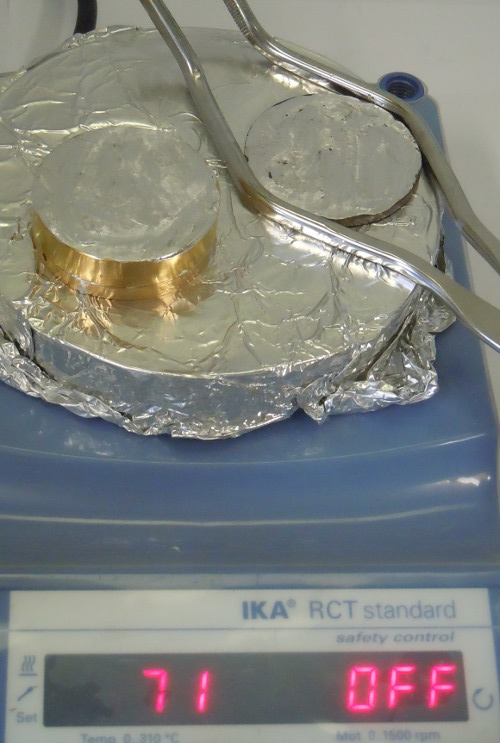Tag archives: oxide electronics
Category: Materials Comments: Comments are closed.
Variable resistors were constructed from epitaxial $\ce{SrRuO3}$ (SRO), $\ce{La_{0.67}Sr_{0.33}MnO3}$ (LSMO) and $\ce{SrTiO3}$ layers with perovskite crystal structure. Each layer was patterned separately by lithographic methods. Optimized wet chemical etchants and several polishing steps in organic solvents allowed good epitaxy of subsequent layers, comparable to epitaxy on pristine substrates. Periodate as the oxidizing agent for SRO and iodide with ascorbic acid as the reducing agents for LSMO were used to attack these chemically resistant oxides. The final devices changed their conductance in a similar manner to previously described variable resistors that were defined with shadow masks.
This article was originally published in Thin Solid Films (2013)
Category: Journal article Comments: 1 comment
Gated variable resistors were manufactured by depositing epitaxial heterostructures of doped $\ce{La2CuO_{4+$\delta$}}$ and $\ce{SrTiO3}$ layers. Their conductance change as function of write current $I$ and write time $t$ followed a simple empirical law of the form $\Delta G/G = C I^A t^B$. This behavior is in agreement with ionic transport that accelerates exponentially with electrical field strength.
© (2012) American Institute of Physics. This article may be downloaded for personal use only. Any other use requires prior permission of the author and the American Institute of Physics.
The following article appeared in J. Appl. Phys. 111, 056101 (2012) and may be found at http://dx.doi.org/10.1063/1.3691599
Category: Journal article Comments: Comments are closed.

